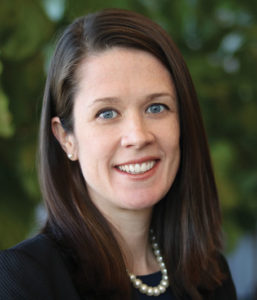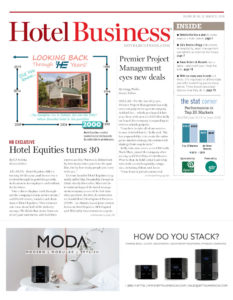NATIONAL REPORT—With all of the brands in today’s market, defining what a brand is and the best way to develop a successful one is becoming more difficult.
“A brand today represents more than just a name—it’s all about the experience the brand brings to the consumer,” said Megan Brumagim, VP of brand management, design and compliance, Choice Hotels International. “Brands can remain dynamic and lasting revenue generators by implementing innovative tools that allow hotels to capture more bookings and position them for long-term health and wealth.”
Unlike brands of the past, the brands of today are being driven primarily by customers. “A brand is the promise of an experience brought to life by the relationship it cultivates with our guests,” said Sheila Schottland, VP of brand marketing, Wyndham Hotels & Resorts. “That relationship is so critical to the essence of the brand because in today’s digital world—with instant reviews via social media—guests are really the ones who define the brand experience every time they stay.”
It’s up to the hotel groups to decide whether it’s worth considering customer feedback before developing additional brands.
“It’s all about connecting with guests and delivering a travel experience that meets their specific needs,” said Bill Duncan, global head of the all-suites and focused-service categories at Hilton. “In today’s market, where new brands are being introduced all the time, it is more important than ever to differentiate from the pack. It’s been said that the market is saturated with brands, and while this may not be entirely true, there are certainly more than ever. This can cause confusion among consumers who don’t understand how one is different from the next.”
With so many brands in today’s marketplace, developing a prosperous one requires a clear understanding of customer needs. “To be successful, a brand must stand apart by offering a unique experience from its competitors,” Duncan said. “At Hilton, we develop concepts that are complementary rather than competitive. They are each able to leverage the strength of the Hilton engine to find success in their respective categories without encroaching upon and competing with one another.”
When considering a new brand, certain conditions must be met before a hospitality group invests time, resources and money into developing one. “We look for opportunities to fill white space that is currently not being served in the industry, and that will encourage new travelers to choose Hilton,” Duncan said. “The goal is to encourage these travelers early on, so as they mature and the reasons behind their trips evolve, they will choose one of the brands in our portfolio designed to meet these specific trip needs.”
Even when there are existing opportunities in the market, hospitality companies perform due diligence before moving forward.
Hospitality companies not only owe it to their guests, but also franchisees to properly vet and test concepts before bringing them to market. “Hoteliers want to know that a brand was brought to market after thorough research and development, and that it fills a specific need in the market,” Brumagim said.
One way to ensure a brand meets the expectations of hoteliers is by including them early in the process.
“We involve our owners from the start when developing a new brand because this collaboration has historically been a driver of our success,” Duncan explained. “We begin the process by conducting extensive research to determine where the opportunity lies, what target segment the brand will serve, and how it will best meet the needs of the demographic. When we are able to show hoteliers that a brand addresses consumer demand, it inspires them to build.”
When it comes to brands, numbers aren’t necessarily meaningless, but they don’t define brands. “All brands need to begin somewhere—even if that is with one single property—because a brand is defined by its standards rather than its number of locations,” Duncan said. “It’s possible for a single location to embody a brand, but, at the same time, the beauty of strong branding is the idea that a guest can stay at a multitude of properties and have a consistent experience.”
Uniformity of properties under the same brand is expected by customers—for the most part.
“Consistency in the product experience, service delivery and messaging is paramount to building a new brand,” Brumagim said. “Guests want to know that when they walk in the doors, they can expect a certain experience for the price they paid. That being said, not all properties need to be the same.”
For example, look at collections. “Our upscale Ascend brand is a collection of unique, historic and boutique properties, and each is one of a kind,” she said. “This upscale soft brand finds success in how each property ties into the broader brand promise—these distinctive hotels have stories to tell, and guests love that about them.”
Successful brands connect with their targeted customer bases and deliver on their promises. “Guests are looking for an experience that fits their needs, values and expectations; hoteliers are looking at the market and competitive landscape to ensure a successful offering that justifies their investment,” she said. “Great brands deliver on both.”
While developing the right guest experience for a brand is key, it’s only a small part to building a successful brand.
“The experience is just the beginning,” Schottland said. “A brand can only be successful with strong support and even stronger distribution—a great rewards program helps, too. Our owners also have flexible options and benefit from the power of scale that comes with being part of the world’s largest hotel franchisor of a 20-brand portfolio, with access to an experienced central team, a growing base of loyal members through Wyndham Rewards, cross sell and distribution opportunities and purchasing power.”
Even after a brand finds itself, there’s always more work to be done; stagnation can ultimately tarnish a brand’s reputation. “Brands need to reflect what today’s consumers are looking for in the hotel landscape,” Brumagim said. “Brands should be constantly evolving to align and live up to consumer expectations, which ultimately nurtures deep consumer loyalty.”
“Brands will continue to be an important part of the travel landscape—or we wouldn’t have thousands of them,” Schottland said. “Travelers are reaping the benefits of all the brand options available to them, and as long as the experience resonates with travelers and meets an unfulfilled need in the industry, new brands will have the potential to thrive.” HB




